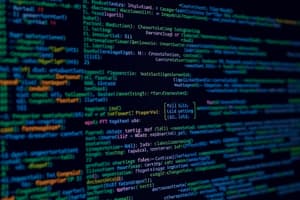Podcast
Questions and Answers
Which concept is a blueprint for creating objects?
Which concept is a blueprint for creating objects?
- Method
- Class (correct)
- Object
- Data
In object-oriented programming, methods define an object's attributes.
In object-oriented programming, methods define an object's attributes.
False (B)
What is the primary purpose of a class constructor?
What is the primary purpose of a class constructor?
Initialization of objects
The process of creating an object from a class is called ______.
The process of creating an object from a class is called ______.
Match the following object-oriented programming concepts with their descriptions:
Match the following object-oriented programming concepts with their descriptions:
In object-oriented programming, what is the primary use of a constructor?
In object-oriented programming, what is the primary use of a constructor?
In object-oriented programming, encapsulation is the mechanism of combining similar data types.
In object-oriented programming, encapsulation is the mechanism of combining similar data types.
Explain the difference between procedural programming and object-oriented programming.
Explain the difference between procedural programming and object-oriented programming.
A ______ is a blueprint for creating objects, defining their properties and behaviors.
A ______ is a blueprint for creating objects, defining their properties and behaviors.
Match the following terms with their corresponding descriptions in object-oriented programming:
Match the following terms with their corresponding descriptions in object-oriented programming:
Which programming paradigm emphasizes data as the primary aspect and encapsulates data with methods to operate on that data?
Which programming paradigm emphasizes data as the primary aspect and encapsulates data with methods to operate on that data?
In object-oriented programming, objects interact by sending messages to each other, which evokes methods in the receiving object.
In object-oriented programming, objects interact by sending messages to each other, which evokes methods in the receiving object.
What is the term for a blueprint or template used to create objects in object-oriented programming?
What is the term for a blueprint or template used to create objects in object-oriented programming?
The principle of hiding internal data and implementation details of a class from the outside world is known as _______.
The principle of hiding internal data and implementation details of a class from the outside world is known as _______.
Which of the following is NOT a characteristic of object-oriented programming?
Which of the following is NOT a characteristic of object-oriented programming?
Procedural programming primarily revolves around creating reusable objects with encapsulated data and methods.
Procedural programming primarily revolves around creating reusable objects with encapsulated data and methods.
In the context of Two Truths and a Lie, how many statements are actually true?
In the context of Two Truths and a Lie, how many statements are actually true?
Match the programming paradigm with its core concept:
Match the programming paradigm with its core concept:
Flashcards
What is Data?
What is Data?
Raw, unorganized facts and figures.
What is a Class?
What is a Class?
A blueprint for creating objects, defining their attributes and behaviors.
What is an Object?
What is an Object?
An instance of a class, a concrete entity with specific values.
What are Methods?
What are Methods?
Signup and view all the flashcards
How do they Interact?
How do they Interact?
Signup and view all the flashcards
Procedural Programming
Procedural Programming
Signup and view all the flashcards
Object-Oriented Programming (OOP)
Object-Oriented Programming (OOP)
Signup and view all the flashcards
Method
Method
Signup and view all the flashcards
Object
Object
Signup and view all the flashcards
Class
Class
Signup and view all the flashcards
Attributes (in OOP)
Attributes (in OOP)
Signup and view all the flashcards
Methods (in OOP)
Methods (in OOP)
Signup and view all the flashcards
Class (in OOP)
Class (in OOP)
Signup and view all the flashcards
Object (in OOP)
Object (in OOP)
Signup and view all the flashcards
Encapsulation
Encapsulation
Signup and view all the flashcards
Polymorphism
Polymorphism
Signup and view all the flashcards
Study Notes
- Chapters 2, 3, and 4 enhance understanding of how data, classes, objects, and methods interact in an object-oriented environment.
- Procedural programming and object-oriented programming are two different approaches to writing computer programs.
- "Two Truths & A Lie" quizzes appear after each chapter section.
- In each quiz, two statements are true, and one is false.
Studying That Suits You
Use AI to generate personalized quizzes and flashcards to suit your learning preferences.




